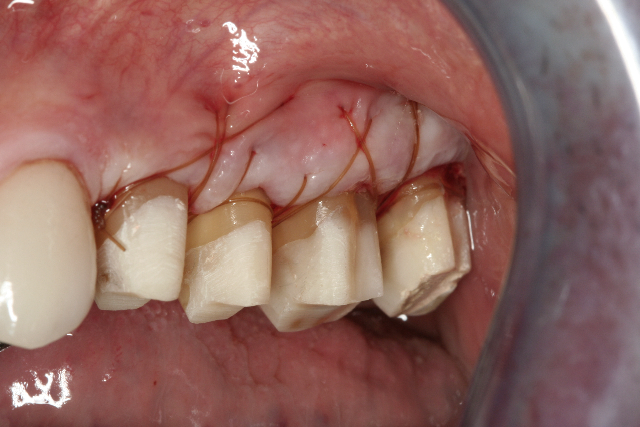No Coverage for Core Buildups Got You Down?
Estela Vargas, CRDH, CEO Remote Sourcing
A common question asked of me is, "How do I get core buildups covered? We are frustrated with so many claim denials for this service.” The short answer is proper clinical evidence of the need and adequate execution of the procedure as described by the ADA CDT current code for a core buildup. The long answer has some twists and turns.
Let's get to the basics of the codes and descriptors to see what is required.
D2950(CDT code) core buildup, including any pins, when required. In prepping the crown (removing existing restorations, fracture, or decay), it is evident that the prep will need extra structure to “retain” the new crown. At this point, stop and take a photo of the remaining tooth structure. You need evidence because the intention is to buildup the coronal structure because there is insufficient retention for a separate extra coronal restorative procedure. The core buildup is a separate procedure, and it must be shown and documented as such.
A mistake some dentists make is reporting a buildup for improving "box form," eliminating concave irregularity or undercuts and fillers. These are not billable components of buildups and will not be paid for by plan providers.
In this situation, it is recommended to bill out the CDT code D2949 “restorative foundation” for an indirect restoration. Restorative material is placed to create an ideal form, including eliminating any undercuts.
If pins are necessary for the restorative foundation, they can be placed and then bill D2951 pin retention per tooth, in addition to restoration.
Some dentists incorrectly bill for a buildup when, after the prep, it is evident there is sufficient retentionwithout a buildup. Insurance companies have become wise to this and have initiated plan policies to prevent improper billing of this code. Proof that the buildup was necessary to retain the crown must be provided. The core buildup should rebuild the internal anatomy of the tooth structure being prepped for a crown.
Insurance companies look for quality radiographs (showing full crown and apex of subject tooth and opposing arch), intra-oral photos, and clinical notes or narratives to provide supporting documentation for core buildups.
Limitations:
- Some plan payers will not reimburse when core buildups are placed on vital teeth. Remember, this is a plan policy provision or limitation on the policy, not an interference with the dentist's diagnosis.
- Core buildups on non-vital teeth, particularly posterior molars, are commonly covered.
- Core buildups on molar teeth treated with endodontics are mostly covered after the crown is seated permanently. If the patient is referred to an endodontist, make sure that it is communicated who will be performing the core buildup. Endodontists typically perform a closure of an endodontic access in an intact crown, and this is not considered a final restoration. Include the endodontist's final report showing the endo completion date in the claim submittal.
- Some payers insist that the core buildup is part of the crown preparation. The code language states that a core buildup is a separate component and not inclusive of a crown prep. You can appeal against this decision by getting a copy of the Plan Document of the contract and carefully examining it for language that excludes a core buildup.
- Some plans will only pay for the core buildup once the crown is seated permanently in the patient's mouth. Since the core buildup is for the retention of a crown, the plan wants to see that the crown has been seated. Report the core buildup as soon as it is performed. The plan will want the seat date of the crown before receipt of payment; this is referred to as “date sequence.”
- Some plans require a predetermination for a buildup and a crown to clarify the plan's provisions and any limitations regarding the procedure.
Always include clinical notes, good clear radiographs pre-treatment and final, and intra-oral photos at pre-treatment, during treatment, and post-treatment. A straightforward narrative can be created from the clinical notes. In the narrative, state, "The core buildup was necessary for the retention of the crown,” List any missing cusps and state the percentage of healthy tooth structure remaining.
- Some payers want to see that less than 50% of the tooth was missing to justify the buildup. Some payers want to see less than a 2mm or 3mm collar in tooth height to reimburse. That is why taking photographs is so important.
When you receive a denial for a core buildup on a crown that you feel should have been covered, there is an appeal process that can help in many instances; however, incomplete evidential records must be available to mount a successful appeal.
Remote Sourcing knows how to appeal claim denials and is here to help bill your claims correctly and help your team learn what is required to get paid.



